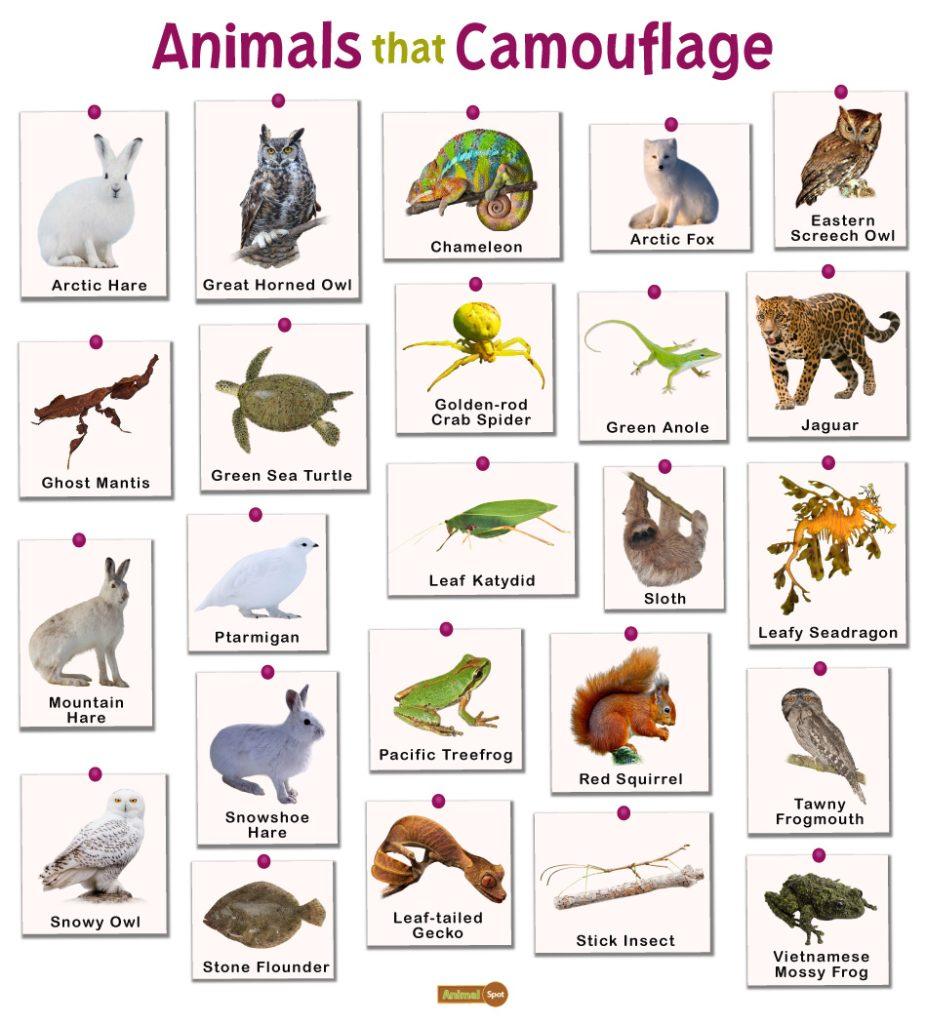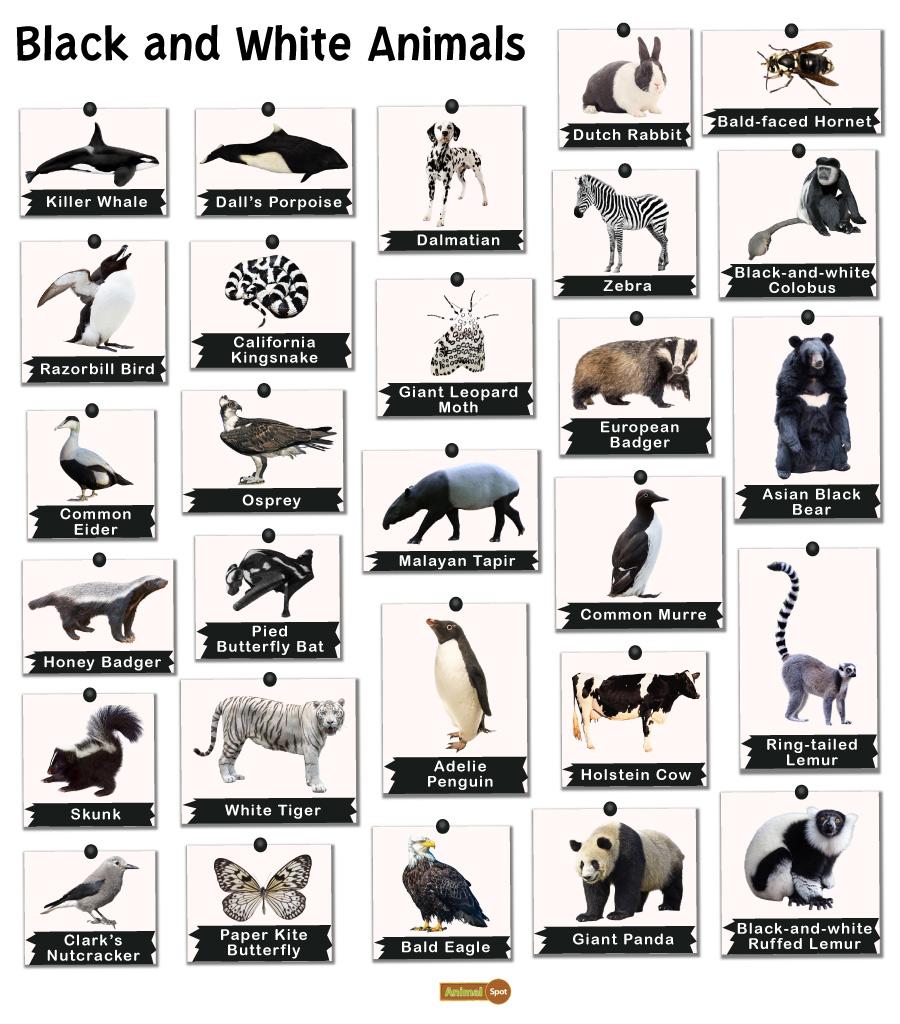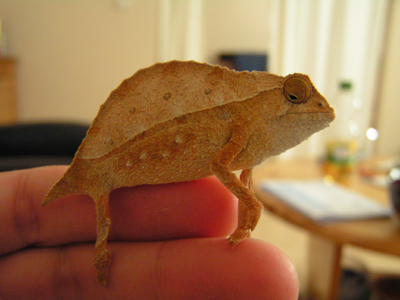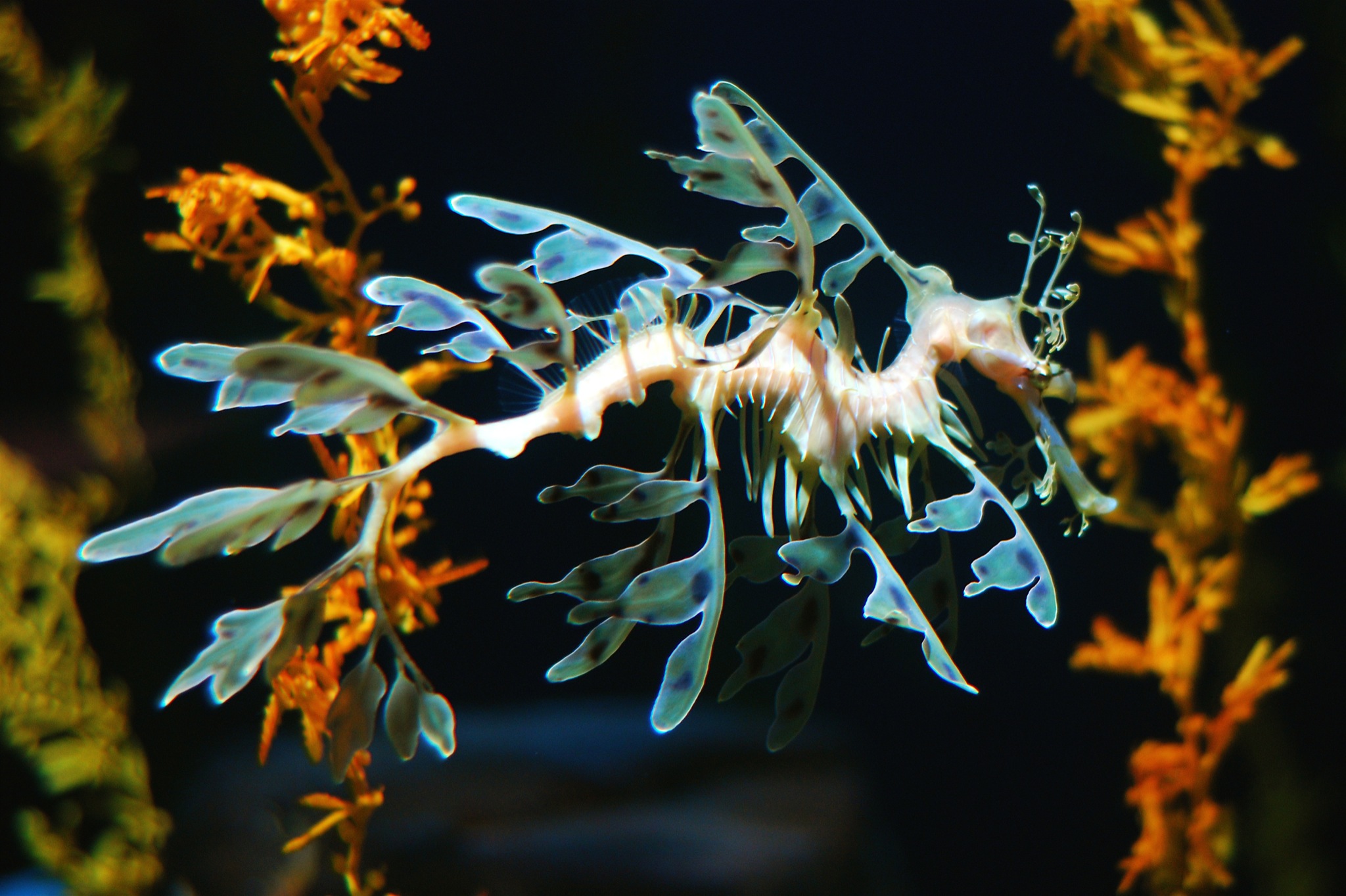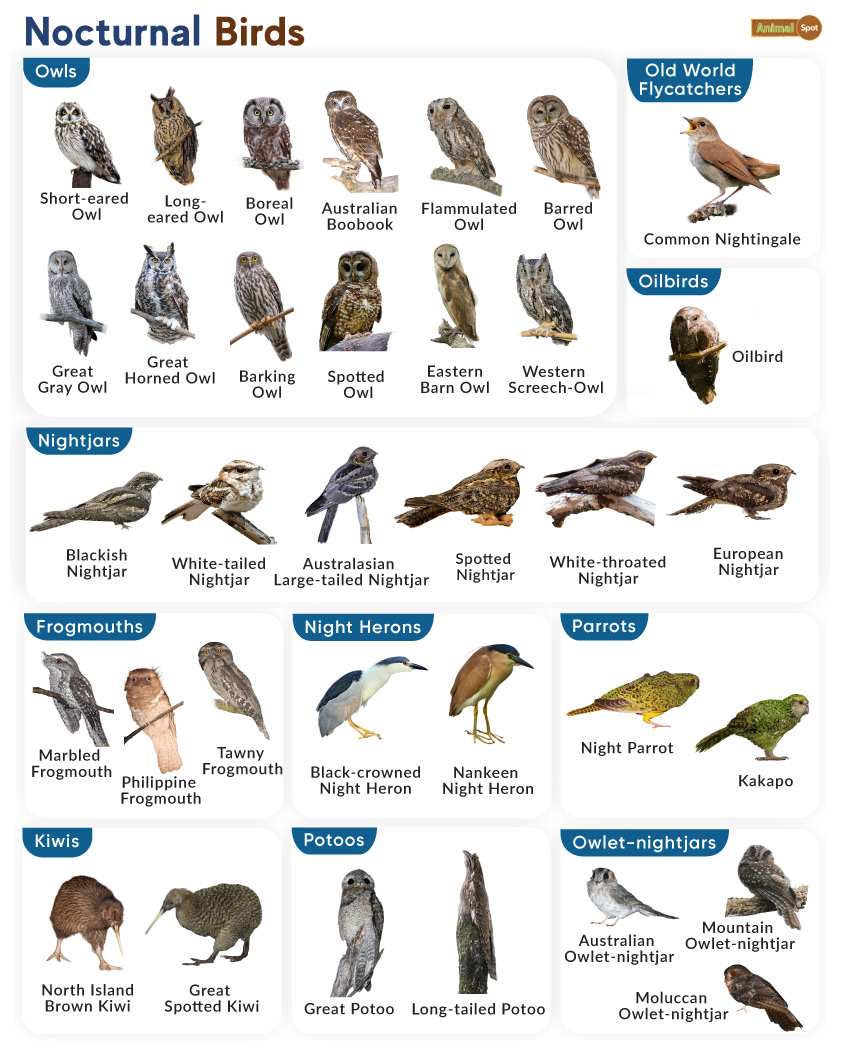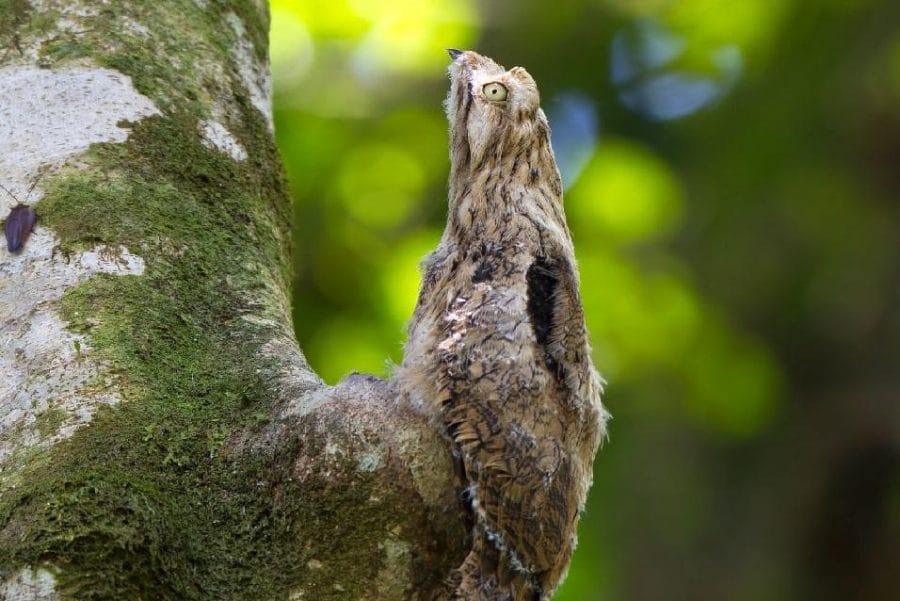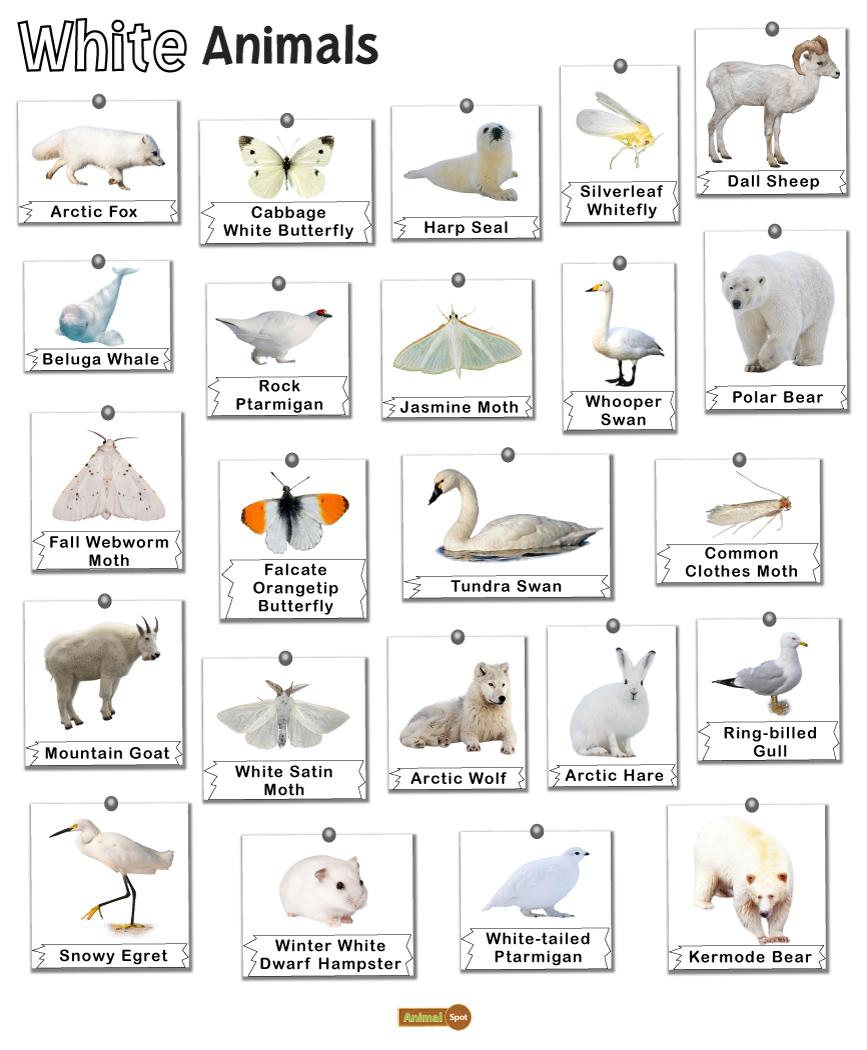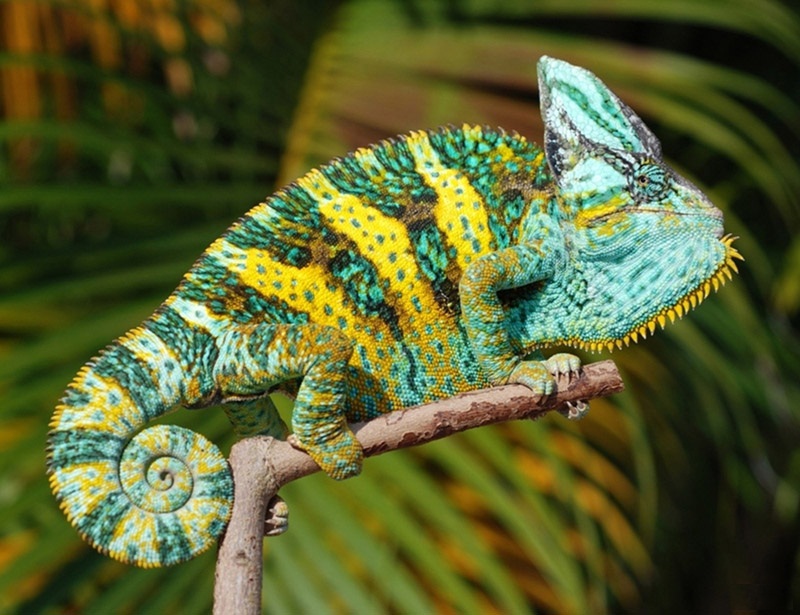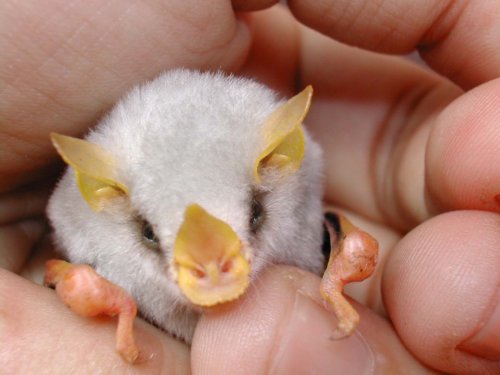| Leaf-tailed Gecko | Reptile | Cryptic Coloration and Disguise | Their mottled brown body resembles a branch. Moreover, their tail bears a striking similarity to a leaf that helps the geckos blend into their surroundings well. |
| Vietnamese Mossy Frog | Amphibian | Disguise | Their green body, black spots, and visible spines make them look like clumps of mosses. |
| Chameleons | Reptile | Cryptic Coloration | Chameleons don’t change color to camouflage. They change color to regulate their body temperature and send signals to their fellow chameleons. However, this helps them blend into their surroundings well. |
| Mountain Hare | Mammal | Cryptic Coloration | They have a grayish-brown coat in summer that replicates the brownish moorlands they mainly inhabit. In winter, their body turns white, camouflaging with the snowy terrain. |
| Red Squirrel | Mammal | Cryptic Coloration | One can barely spot these red squirrels when they remain perched on the barks of pine trees. |
| Goldenrod Crab Spider | Invertebrate | Cryptic Coloration | They remain hidden in flowers, changing their colors to match their habitat well. |
| Green Sea Turtle | Reptile | Disruptive Coloration | These turtles follow the countershading technique where the dorsal part appears dark, and the ventral part has a lighter shade. This protects them from potential predators as their dark body blends with the ocean depths. |
| Great Horned Owl | Bird | Disruptive Coloration | Specialized feathers or tufts help them disguise themselves. The tufts help break the round face profile of these owls; thus, they seem to be a part of the barks and woods they inhabit. |
| Eastern Screech Owl | Bird | Cryptic Coloration | Its white, gray, or tan body blends well with the barks. This makes it difficult for predators to spot the owl when it remains hidden within the cavities of the tree. |
| Snowy Owl | Bird | Cryptic Coloration | Their white feathers help them survive in the snowy landscape. |
| Mimic Octopus | Invertebrate | Cryptic Coloration, Aggressive Mimicry | They change their body color to match their surroundings with the help of chromotophores or color-changing cells lying under their skin’s surface. These octopuses can also mimic the shapes of the most dangerous creatures at sea as a defense mechanism. |
| Tawny Frogmouth | Bird | Cryptic Coloration, Disguise | These birds have brownish-gray feathers marked with mottled black spots and streaks. This makes them easily mistaken for tree bark. |
| Arctic Hare | Mammal | Cryptic Coloration | Their coat turns white in winter, making them indistinguishable from the snow. |
| Alaskan Hare | Mammal | Cryptic Coloration | Like the Alaskan hare, their coat also transforms to white in winter, looking like a ball of snow against the snowy terrain. |
| Ptarmigans | Bird | Cryptic Coloration | They go through a series of molts between April and November, and their plumage change according to the ground color. In winter, they appear white; in summer, their body turns brown, while in spring, they are a mix of white and brown. |
| Leafy Seadragon | Fish | Cryptic Coloration, Disguise, Mimicry | They have leafy appendages and can change color to match the seagrass and seaweeds. These fish even sway like plants during water currents. |
| Pacific Tree Frog | Amphibian | Cryptic Coloration | These frogs change color according to humidity, temperature, and mood. In high temperatures, they appear yellow; when afraid or excited, they become pale. |
| Stone Flounder | Fish | Cryptic Coloration, Mimesis | When swimming close to the bottom of the sea, they can imitate the colors and textures found on the sea floor. So, they may resemble sand at one moment and rocky bottom at the next moment. |
| Dead Leaf Butterfly | Insect | Mimesis | When their wings are closed, they no longer look like a butterfly but like dry leaves having dark veins. |
| Leaf Katydid | Insect | Mimesis | They mimic the shapes of branches, leaves, and barks. |
| Green Anole | Reptile | Cryptic Coloration | They aren’t chameleons but change color like them from green to yellow, brown, or even gray. |
| Sand Crab | Invertebrate | Cryptic Coloration | It has a gray shell that gives it a color similar to the sand it stays in. |
| Arctic Fox | Mammal | Cryptic Coloration | During winter, it has a white coat that looks like a ball of snow. As the season changes, the white coat sheds, and a brown one grows, which again matches the rocky surroundings. |
| Stick Insects | Insect | Mimesis | Stick insects look like twigs or sticks that help them shield themselves from potential predators. |
| Two-tailed Spider | Invertebrates | Cryptic Coloration | Their brownish body blends with the color of the barks. These spiders change color in accordance with the surface they rest on. |
| Buff-Tip Moth | Insect | Disguise | When at rest amidst broken twigs on the forest floor, identifying them is impossible. |
| Ghost Mantis | Insect | Cryptic Coloration, Disguise | Because of their brown body, many can mistake them for dried-up leaves or withered branches. They even tuck their forelegs against their body and rock like leaves blown by a breeze. |
| Brown Vine Snake | Reptile | Cryptic Coloration | Their grayish-brown upper side and yellow undersides help them camouflage in the foliage they inhabit. |
| Sloths | Mammal | Self-Decoration | Sloths are the world’s slowest mammals, and their sedentary life provides them with scope for camouflage. Their soft fur encourages algae growth. These mammals are so laid back that they don’t do much to prevent growth. Hence, they have a greenish covering on their body that helps them hide in plants. |
| Snowshoe Hare | Mammal | Cryptic Coloration | During spring and summer, their coat is reddish-brown, similar to the color of the rocks and surrounding dirt. In winter, their white coat replicates the color of the snow. |
| Stoats | Mammal | Cryptic Coloration | Like the snowshoe hare, the stoat, also has a brown summer coat and a white winter coat. |
| Jaguar | Mammal | Disruptive Coloration | The spots on their coat, called rosettes, help them blend with the tall grasses and tree branches. |
| Gaboon Viper | Reptile | Mimesis | Their broad head, and short tail looks like a fallen leaf. |
| Sea Urchin | Invertebrate | Self-Decoration | They decorate themselves with shells, rocks, and algae to protect from predators. |

